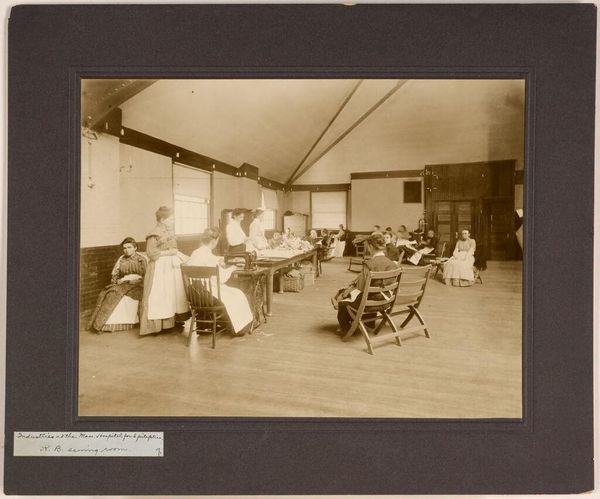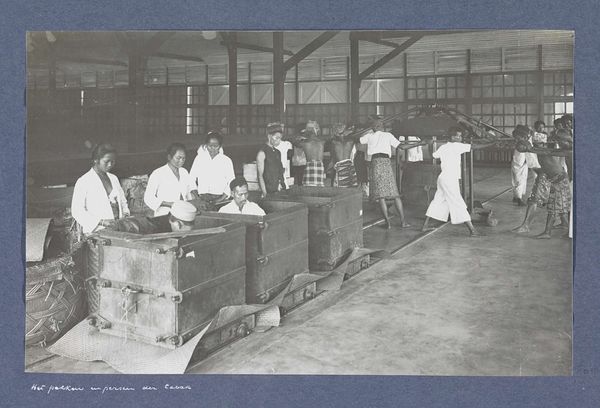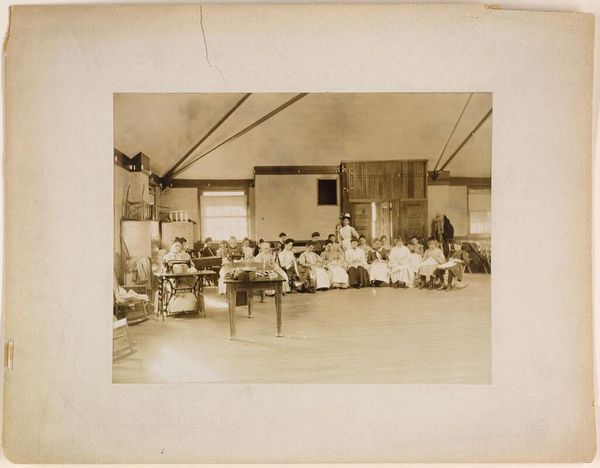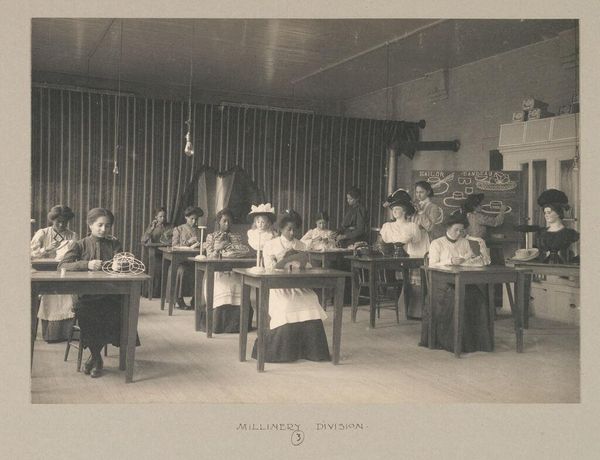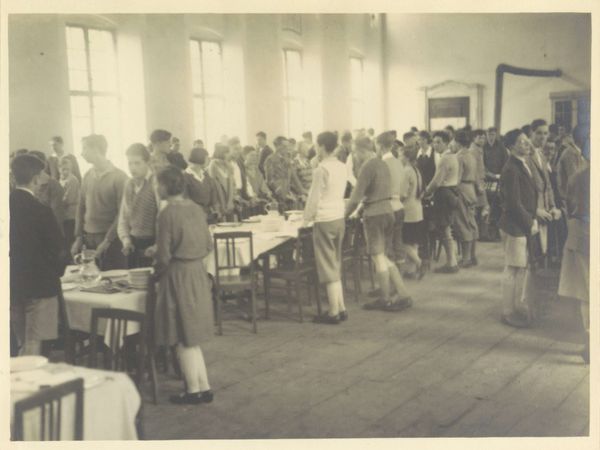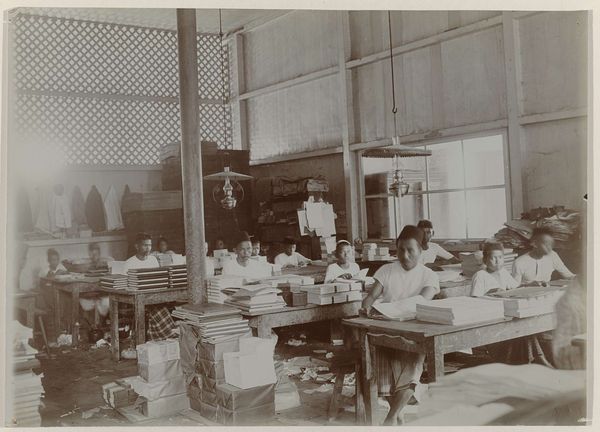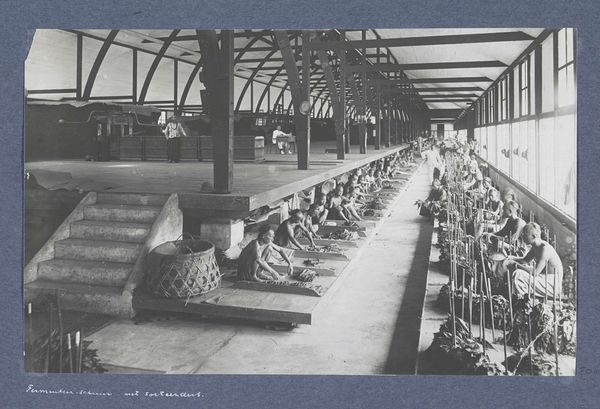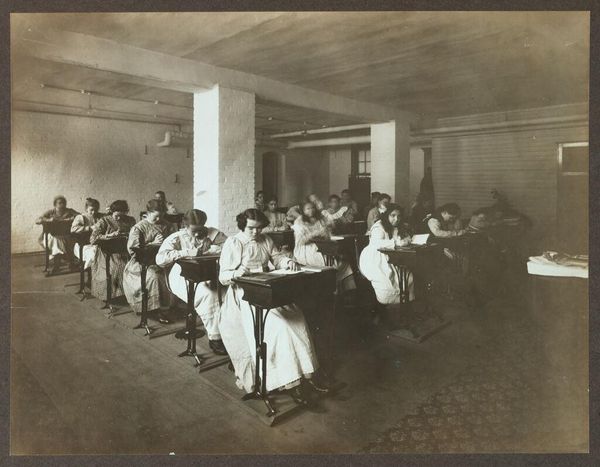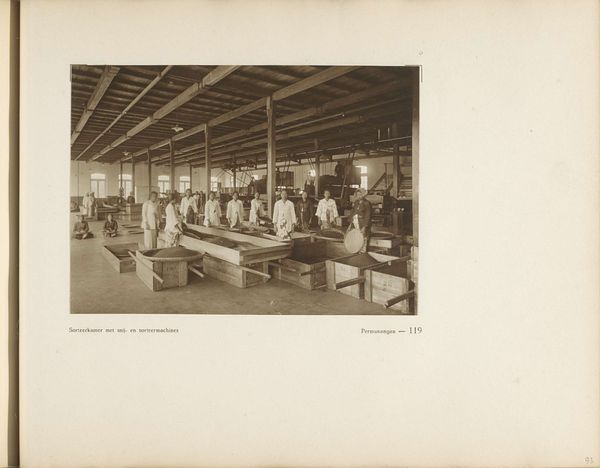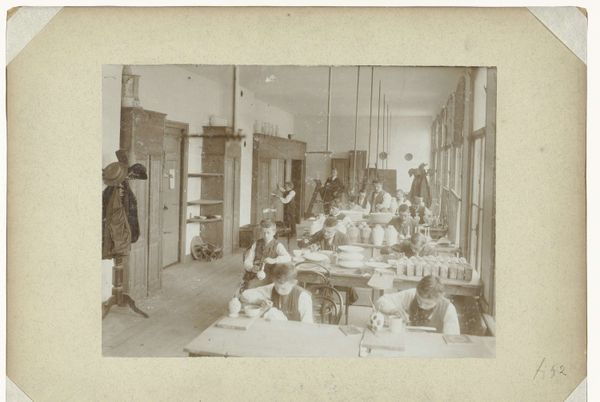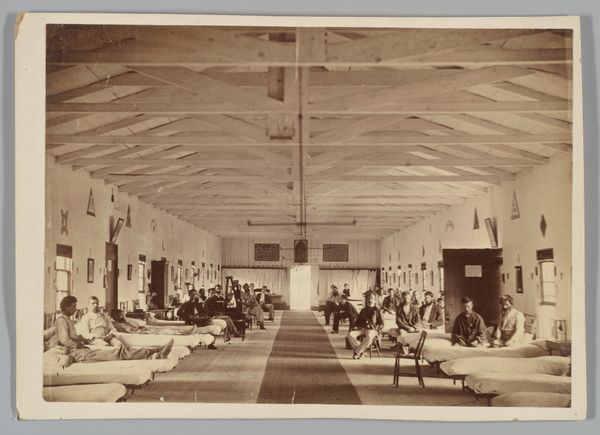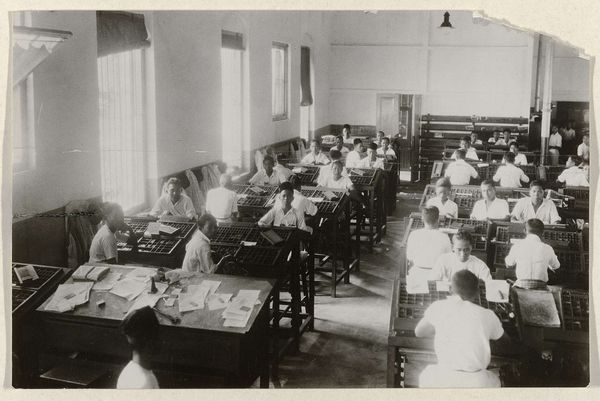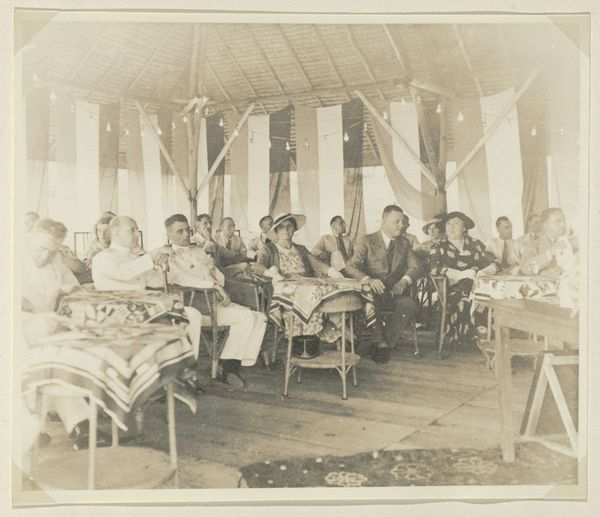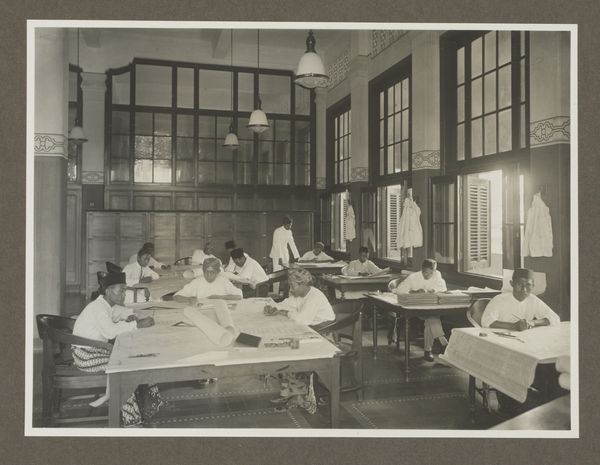
Aziatische en Europese werknemers in de oude ontvangkamer van tabaksplantage Mariendal op Sumatra c. 1900 - 1915
0:00
0:00
gelatin-silver-print, photography, gelatin-silver-print
#
gelatin-silver-print
#
photography
#
gelatin-silver-print
Dimensions: height 177 mm, width 283 mm
Copyright: Rijks Museum: Open Domain
Curator: Immediately, I'm struck by the sheer starkness of the image; a cool, almost sterile quality. Editor: Indeed. We’re looking at a gelatin-silver print titled “Aziatische en Europese werknemers in de oude ontvangkamer van tabaksplantage Mariendal op Sumatra,” created around 1900-1915. The photographer is Carl J. Kleingrothe. It’s currently held at the Rijksmuseum. The materiality is so integral here – the gelatin-silver process allowing for mass production and dissemination of this colonial scene. Curator: Colonial is definitely the word that springs to mind. The composition, though seemingly candid, is carefully constructed. The arrangement of figures—European supervisors standing while Asian workers are seated—creates a visual hierarchy. Note how light falls on those pristine white uniforms. Editor: Absolutely. The photographic process here highlights the vast, industrial space—the long tables, the raw material of tobacco waiting to be processed. We see the mechanisms of colonial labor at play; it reveals the dynamics between the colonizers and the colonized. Curator: And it does so by seemingly offering a neutral depiction. It’s almost…a record of efficient organization. However, by understanding the conditions under which the photograph was produced— the power dynamics inherent in a colonial context—the "realism" of the scene cracks open, and something more insidious bubbles to the surface. The use of space, the way the figures are positioned relative to one another… It's loaded. Editor: Consider the intended audience, too. Who was meant to view this image? To see this staged representation of industry as a success of labor exploitation and extraction. Curator: Yes! We might decode these signifiers of an efficient, productive space as a smokescreen that shields the social impact of colonial economic structures and the workers involved in global tobacco production. The photograph gives visibility to the workforce; however, it also dehumanizes through a semiotic exercise that flattens people. Editor: Thinking about labor – the repetitive motions, the subjugation… One can see this not just as a visual document, but as a node in a complex network of resource extraction and capitalist exploitation. It forces us to reconsider photography's role as not only a recording device, but also a key instrument of empire. Curator: Ultimately, analyzing this work compels us to face the historical roots of inequality that extend from those very first images that came from colonial exploitation. Editor: Exactly. By seeing and dissecting these seemingly simple images, it’s possible to truly examine and, more importantly, question the economic systems upon which they were originally built.
Comments
No comments
Be the first to comment and join the conversation on the ultimate creative platform.
